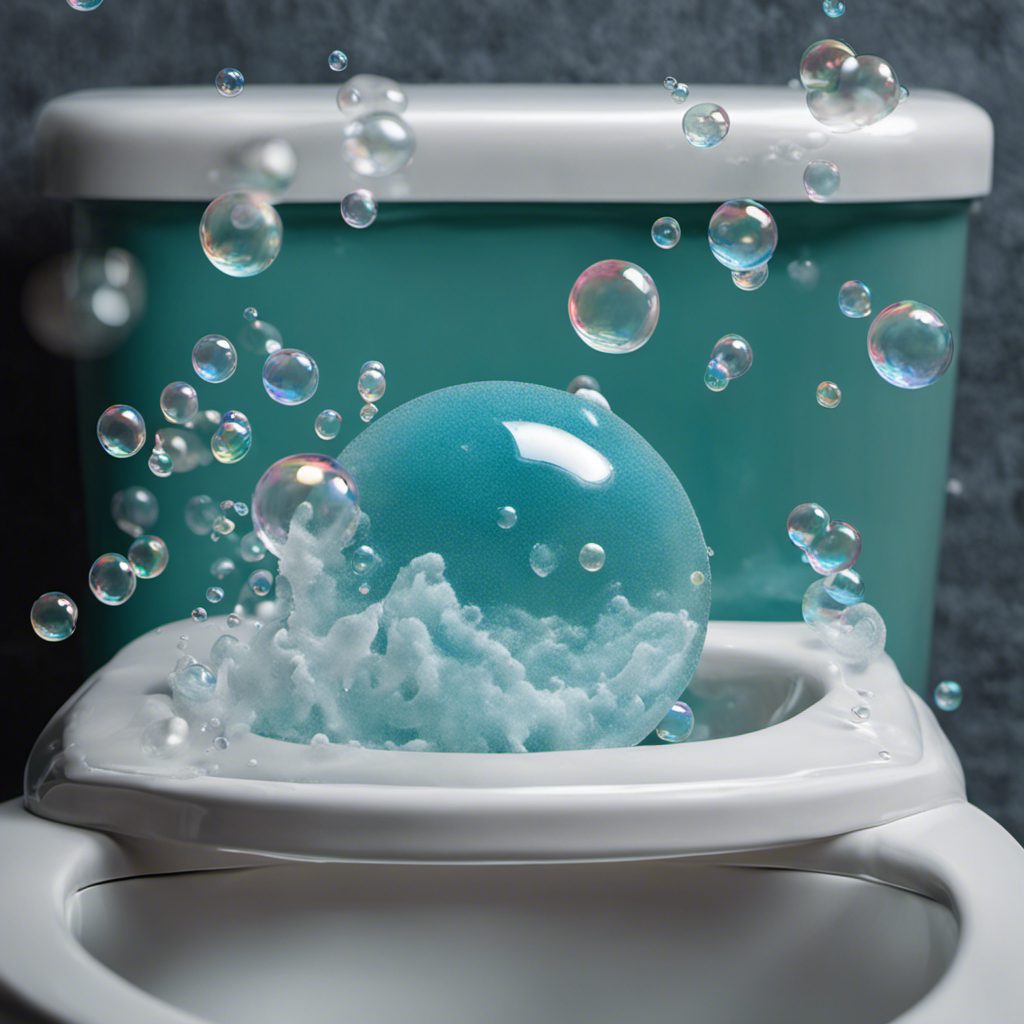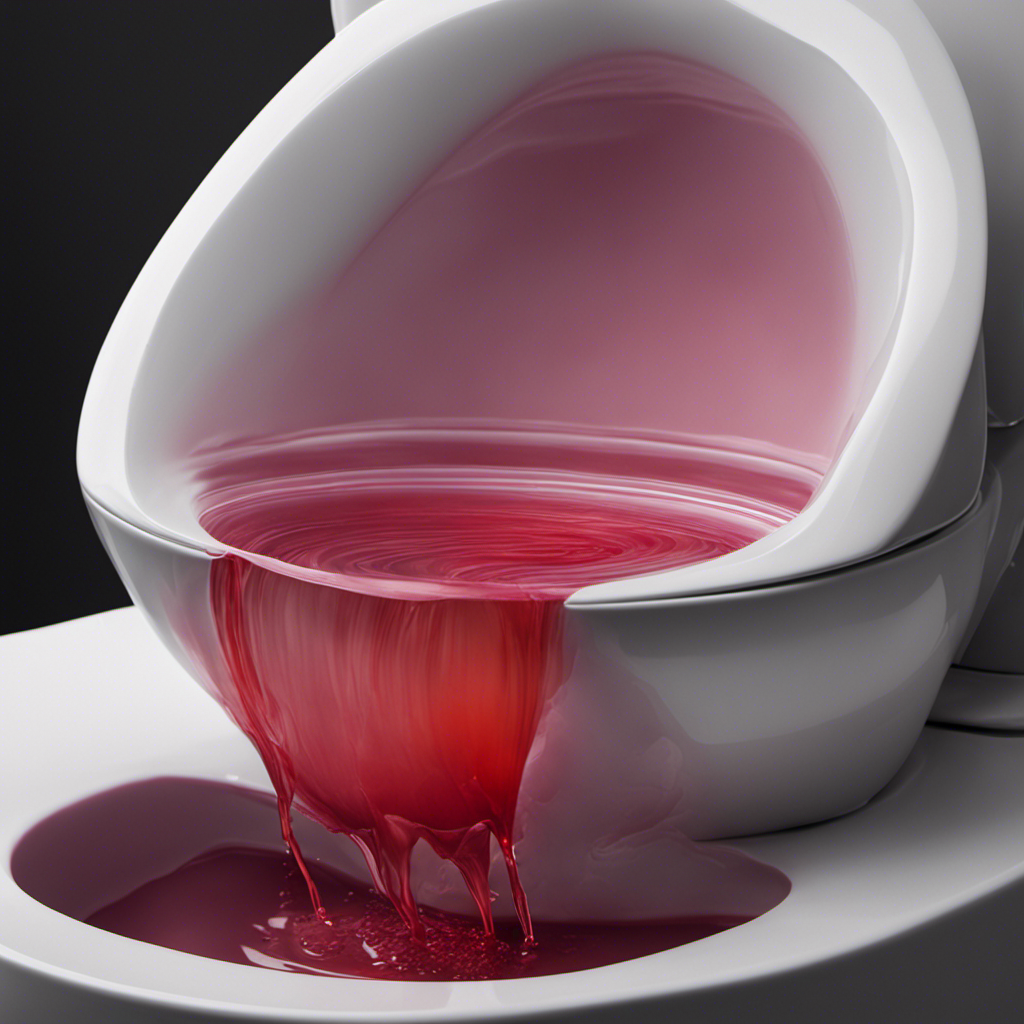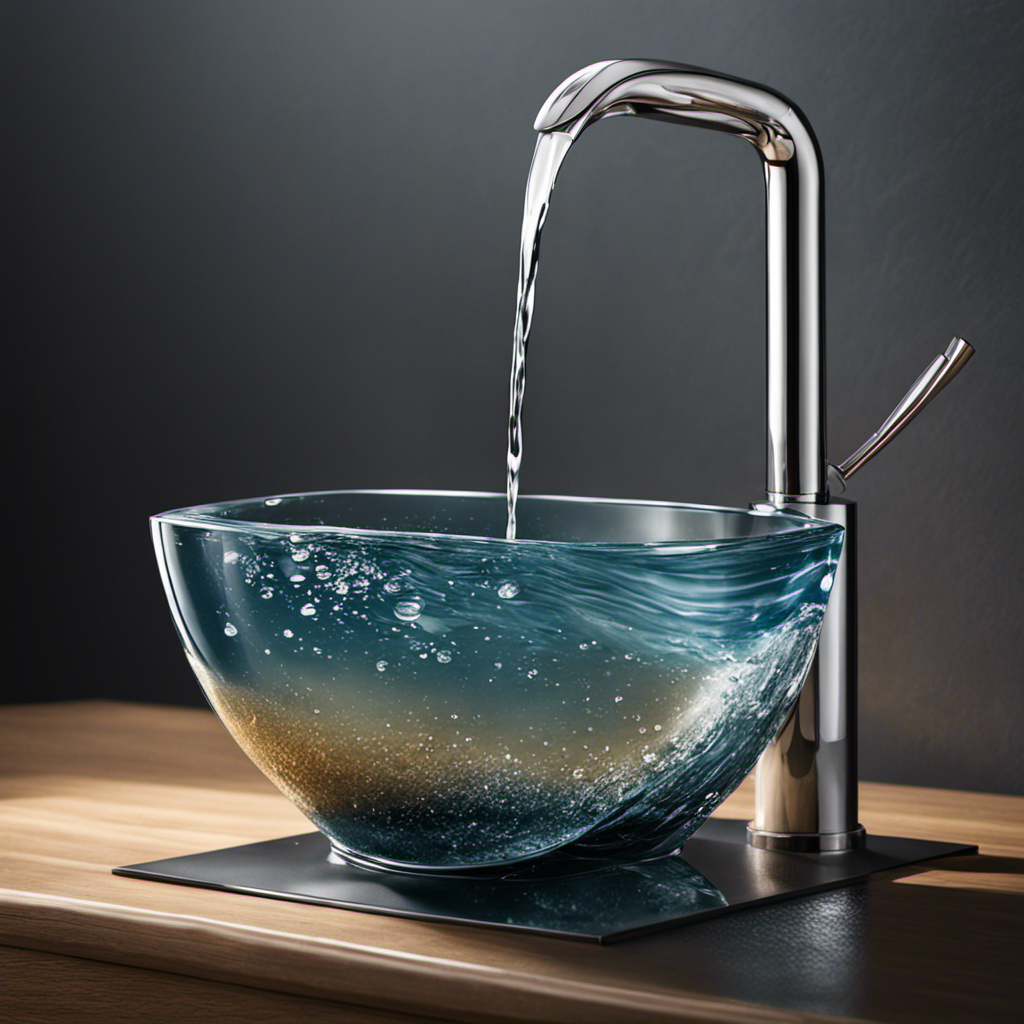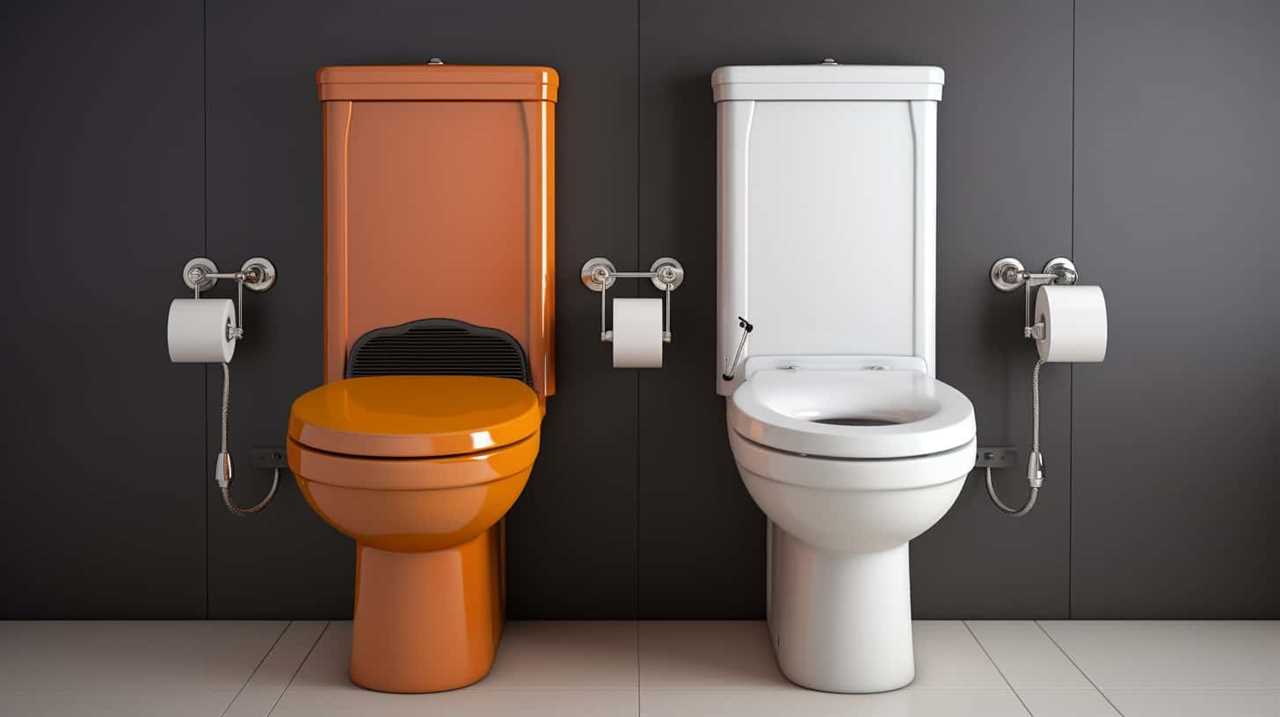As a plumber, I’ve seen my fair share of toilet troubles. But let me tell you, nothing catches a homeowner off guard quite like a bubbling toilet.
It’s a strange sight, isn’t it? One minute, everything seems normal, and the next, your toilet is gurgling like a fish tank. But fear not, because those bubbles are trying to tell you something.
In this article, we’ll dive into the potential causes behind this phenomenon and equip you with the knowledge to tackle any plumbing issues head-on.
Key Takeaways
- Clogged drains and excessive toilet paper can cause toilet bubbles.
- Slow drainage, gurgling sounds, foul odors, and water backups are signs of plumbing issues.
- Sewer gas exposure can lead to health problems, so prompt attention to plumbing issues is crucial.
- Regular cleaning, maintenance, and professional help are important for preventing and addressing toilet bubbles.
Common Causes of Toilet Bubbles
One of the most common causes of toilet bubbles is a clogged drain. When the drain is clogged, it restricts the flow of water from the toilet bowl, causing an increase in water pressure. This increase in pressure can lead to bubbles forming in the bowl.
The clog can be caused by various things such as excessive toilet paper, foreign objects, or a buildup of debris over time. To fix this issue, it is important to unclog the drain using a plunger or a drain snake. By removing the clog, the water pressure will be restored to normal, and the bubbles in the toilet bowl should disappear.
It is crucial to regularly clean and maintain your drains to prevent clogs and avoid the occurrence of toilet bubbles.
How to Identify Plumbing Issues With Toilet Bubbles
To identify plumbing issues with toilet bubbles, you can look for other signs such as slow drainage or gurgling sounds. These signs can indicate underlying problems with your plumbing system that need to be addressed promptly. Here are some key signs to watch out for:
-
Slow drainage: If water takes longer than usual to drain from your toilet, it could indicate a blockage or clog in the pipes.
-
Gurgling sounds: Unusual gurgling noises coming from your toilet when you flush or use other plumbing fixtures can be a sign of a venting issue or a blocked sewer line.
-
Foul odors: Persistent foul odors coming from your toilet can be a sign of a sewer backup or a broken sewer pipe.
-
Water backups: If water from your toilet or other plumbing fixtures backs up into other drains or overflows, it indicates a serious plumbing issue.
-
Fluctuating water levels: If the water level in your toilet bowl constantly fluctuates, it could be due to a problem with the fill valve or a leaking flapper.
Understanding the Role of Sewer Gases in Toilet Bubbles
Understanding the role of sewer gases in causing bubbles in your toilet can help you identify and address potential plumbing issues. Sewer gas odors are often the result of a blocked or damaged sewer line, which can lead to the formation of bubbles in your toilet. These bubbles are caused by the release of trapped gas into the water, creating a bubbling effect. It is important to address these issues promptly, as sewer gas odors can pose health risks. Exposure to sewer gases can cause symptoms such as headaches, dizziness, nausea, and respiratory problems. To ensure the safety of your household, it is crucial to have a professional plumber inspect and repair any issues with your sewer line.
| REASONS FOR SEWER GAS ODORS | HEALTH RISKS |
|---|---|
| Blocked sewer line | Headaches |
| Damaged sewer line | Dizziness |
| Trapped gas release | Nausea |
| Bubbling effect in toilet | Respiratory problems |
| Promptly addressing plumbing issues |
Prevention and Maintenance Tips for Avoiding Toilet Bubbles
Regular maintenance and proper ventilation are essential for preventing the formation of bubbles in the toilet caused by sewer gas odors. Here are some toilet bubble prevention techniques:
- Regularly clean the toilet bowl and tank to remove any buildup that could lead to blockages.
- Check and fix any leaks or cracks in the toilet’s plumbing system.
- Install a vent pipe to allow proper air circulation and prevent the accumulation of sewer gases.
- Use a plunger to clear any clogs that may be causing the bubbles.
- Avoid flushing non-flushable items down the toilet to prevent blockages and backups.
By implementing these common DIY fixes for toilet bubbles, you can effectively maintain a bubble-free toilet.
However, if you continue to experience persistent bubbles or notice other plumbing issues, it may be time to call a professional for further toilet bubble troubleshooting.
When to Call a Professional for Toilet Bubble Troubleshooting
If you’re experiencing persistent issues or noticing other plumbing problems, it might be time to call a professional for toilet bubble troubleshooting. While there are some DIY fixes for toilet bubbles, it’s important to know when to seek professional help.
Toilet bubbles can be a sign of more serious problems within your plumbing system, such as a clogged or blocked sewer line. These issues require specialized equipment and expertise to diagnose and fix. Attempting to tackle them on your own could potentially worsen the problem or cause damage to your plumbing system.
Signs of more serious toilet bubble problems include foul odors, slow drainage, gurgling sounds, and multiple fixtures backing up simultaneously. If you notice any of these signs, it’s best to contact a professional plumber to assess and resolve the issue.
Conclusion
In conclusion, when your toilet bubbles, it’s crucial to determine the underlying cause to prevent further plumbing issues. By identifying the source of the problem and understanding the role of sewer gases, you can take necessary preventive measures and ensure proper maintenance.
Remember, regular maintenance is key to avoiding toilet bubbles and keeping your plumbing system in top condition. However, if you’re unsure or the problem persists, it’s always wise to call a professional for expert assistance.
Protect your home and maintain a clean and functional toilet by addressing toilet bubble troubles promptly.










